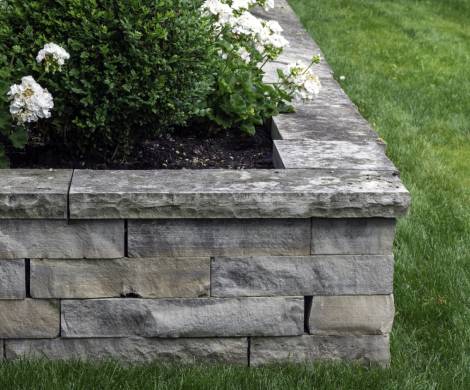LANDSCAPE RETAINING WALLS AND STEPS
Services
LANDSCAPE RETAINING WALLS AND STEPS
Retaining walls can add the finishing touch to a well-landscaped yard, or provide a focal point around which the entire design can pivot. Since they also have an important structural function, retaining soil and creating rigid tiers in your yard, they should also be made with high-quality stones or pavers. Molina can supply and install the finest brick, clay, or travertine pavers to help you create a retaining wall that will set your yard apart from your neighbors. Here is all you need to know about retaining walls and steps.

TYPES OF RETAINING WALLS
There are four basic types:
Projects
RETAINING WALL PROJECTS
HOW TO BUILD STEPS IN A RETAINING WALL
When building steps in a retaining wall, the important thing is to design your staircase in accordance with the natural gradient of your slope. On steep slopes, steps should be packed closely together, while flatter gradients lend themselves to wider steps and landings. Start the process by plotting the location of your stair risers. Then you can begin excavating the base trench and stair locations. After installing the base course and the first riser, you can add rock and/or soil backfill and compact. You can then build in additional steps repeating the filling and compact process as you go.
Constructing a retaining wall is a complex procedure and best left to a professional contractor. Contact us today for more information!
DESIGNS & PATTERNS FOR RETAINING WALLS
Pavers can be installed in a variety of patterns and designs, one of their many benefits. You could opt for herringbone, basket weave, running bond, stack bond, circular, or fan patterns. The choice of pattern will depend on your preferences, as well as your choice of material and the shape of the area of being paved.
RETAINING WALLS / STEPS FAQ
Retaining Walls and Steps Contractor
If you are planning to install a retaining wall and steps, secure the help of an experienced contractor. Molina is your first choice for the supply and installation of quality brick, clay, or travertine pavers. Contact us for more information.


